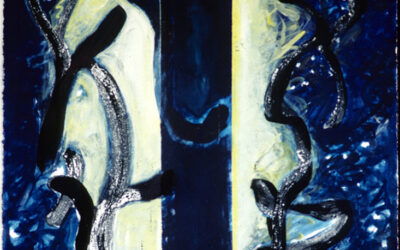Blog
The Vinyl Resurgence: Finding Connection, Ritual, and Meaning Through Music
If you’re over the age of 24, you probably had a Walkman as a kid. And if you’re a bit older than that, you may also have had a VCR or tape player. Or maybe you had records, or you remember your parents having a record player on display or, more likely, tucked into the back of the basement closet. But no matter what media you consumed, we all have the common ground of knowing physical relics that no longer exist — or, that are no longer in regular societal use.
After February
February is the shortest month, but this past February had too many days that felt like lifetimes, as crisis after crisis pounded across our screens. The occupation of Ottawa dragged on for weeks before finally being brought to an end by the first use of the Emergencies Act in Canadian history. Then, Russian President Vladimir Putin launched an unprovoked and unjustifiable invasion of Ukraine, so far killing thousands, displacing millions, and unleashing devastation and horror against Ukrainian cities. The world seems to be coming apart at the seams, and in March, we can feel each stitch breaking one by one.
LGBTQ+ History Without Liveliness is Like a Bernice Bing Painting Without Emotion
LGBTQ+ History Month was started in 1994 by Rodney Wilson, a Missouri teacher who wished to celebrate and spread awareness of LGBTQ+ history and accomplishments. It is distinct from June’s Pride Month, which celebrates LGBTQIA2S+ people past and present, as well as LGBTQIA2S+ activism. LGBTQ+ History month typically engages with LGBTQ+ history and teaching through its annual list of 31 LGBTQ+ leaders, or “Icons,” from various points in history. Reading the biographies of these “icons” made me think about the ways in which LGBTQIA2S+ history is simultaneously comprised of communal and personal histories.
Sweet Things
Marlene kept a watchful eye on her grandchildren, Sibby and Amy, prancing ahead on the worn path. Brush lined the trail. The occasional weed flaunted flowers, but most of the colours were dull as if the sun had failed to provide enough warmth to stimulate their hues.
A (Surgical) Cut Above the Rest: A Retrospective on the Castrato
For any cool, modern champion of informed consent and bodily autonomy, there is perhaps no obsolete Western musical practice quite so untenable as the making of a castrato. The castrati (castrato in singular form) were singers surgically castrated prior to puberty and commonly associated with opera. The castration served to maintain the high vocal register present prior to some sexual maturation processes contingent on increased testosterone levels. One instinctive response to the past existence of castrati is revulsion. After all, many of us are understandably very sensitive about our genitals. But, despite the testicular anxieties the castrato figure evokes, castrati remain a fascinating case study for the cultural and sonic nuances of their era of European music.
THE EGOTISTIC LUNATIC IN THREE ACTS
With his sorrow scattered;
and his jigsaw broken;
The Egotistic Lunatic collects pieces off the ground…
His back breaks under expense
Which cannot be outweighed by peace,
by pace,
Or (tragically) repentance…
Review: Please Look After Mom
After its release over a decade ago in South Korea, the immediate success of Kyung-Sook Shin’s Please Look After Mom sets high expectations for contemporary readers. The novel precedes its reputation as it evokes universal feelings of nostalgia and guilt through its relatable premise: dealing with the grief of the love you never get to share. Please Look After Mom sold over a million copies within 10 months of its release in South Korea, and continued to achieve critical success after its translation to English in 2011.
Voyage to Enceladus
‘It’s in your blood.’
I let a moment of silence develop into discomfort. Staring down at the recruitment agent from atop the zamboni, I can almost see, in my reflection in her pale blue eyes, the pages of an old storybook her parents used to read to her. The round-cheeked Eskimo, face framed by parka mane, eyes crinkled into crescent moons by a delighted smile as he raises his modest catch from a hole in the sheet. My great grandparents left Nunavut around the year 2100, when the ice disappeared.
All the People are Poisonous if Eaten Raw
I took up the endeavour of reviewing these anthologies for my own pleasure, and for the sake of erudition. Both works were presented to me at the same time and both felt equally distanced from me at first (as often is the case when I, a relatively amateur poet, read seasoned authors). Yet, reviewing these collections prompted me to find ways of incorporating their novel sensations into the ones I have already fostered, and beckoned me to appreciate poems in ways I haven’t done before. I am thankful that they brought me out of my comfort zone – I feel like I have uncovered yet another facet of the literary realm.









